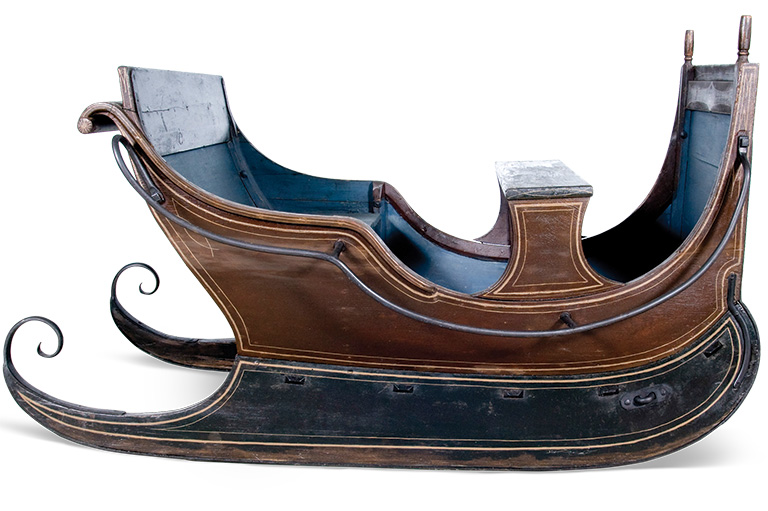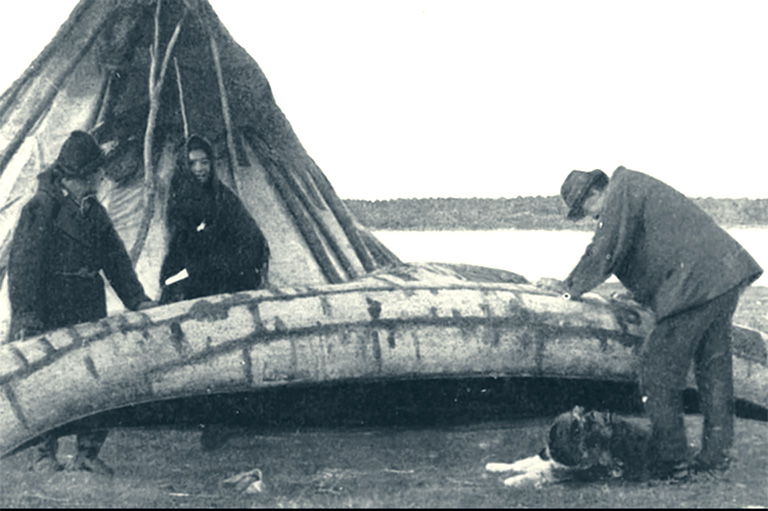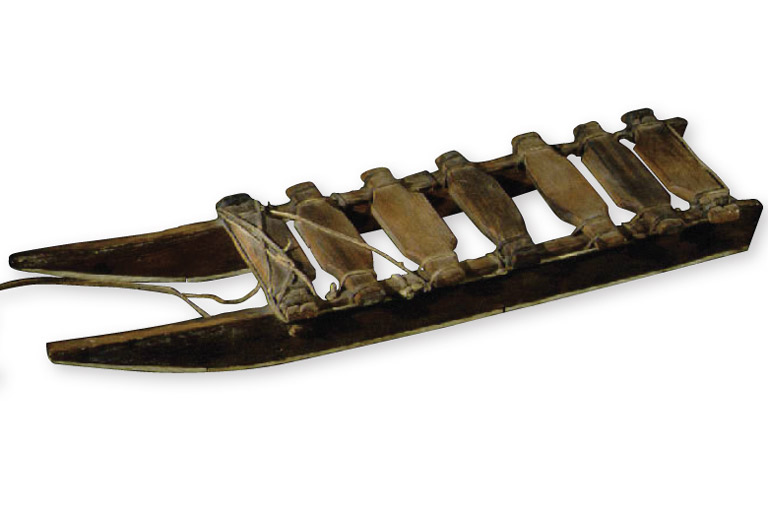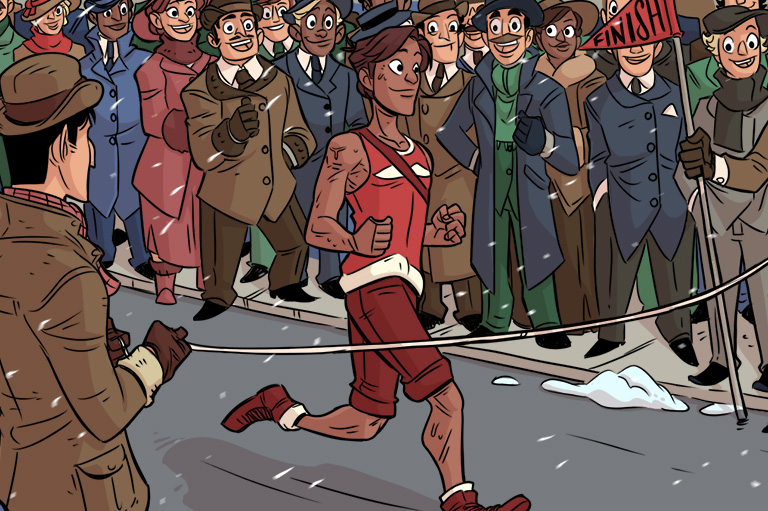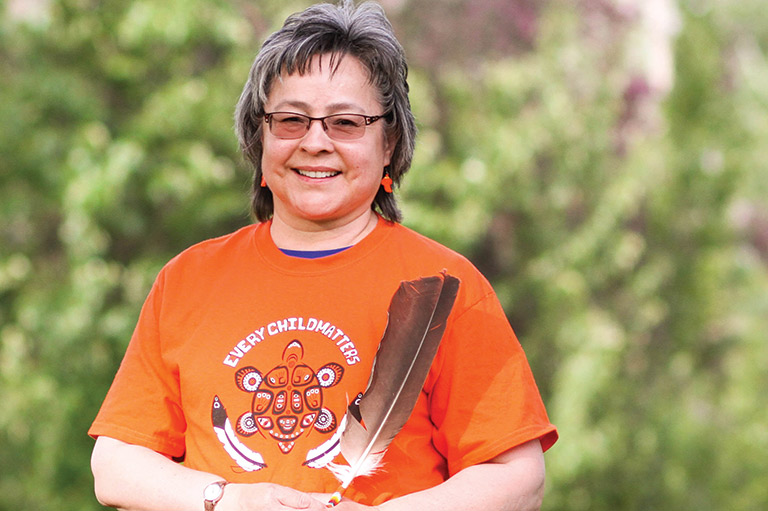Tides of Change

Like all cultures across the world, Inuit in taitsumani (olden times) required a way to hunt and to travel. In the far northern hemisphere, where Inuit have lived for millennia, the majority of animals live in or by the ocean. In order to get close to game animals and to travel between settlements, Inuit needed a means of transportation that was adapted to the human body. It had to be fast, ergonomic, made from minimal supplies, and capable of avoiding water intake while floating nearly flush with the water’s surface in order to avoid being buffeted by the wind. Inuit invented a tool that met all of these engineering parameters and called it Kajak.
Inuit span an extremely wide geographical distance that crosses provinces, territories, and also countries. Across this distance there have been varying timelines of contact with traders and missionaries. It is therefore challenging to describe the exact history of the Kajak in each area. However, generally it can be said that before the advent of industrialization the Kajak was sunaujak (important) for day-to-day life, while today its importance exists as a cultural connection to traditional Inuit lifestyles and, to a lesser degree, as a means of procuring food and of travelling.
In the past, Kajait (kayaks) were built by hand by the users and their family and friends. Today Kajattet (kayakers) almost always buy Kajait — made out of materials like plastic, fibreglass, and Kevlar — from commercial companies instead of building the boats themselves. However, there are individuals who take it upon themselves to build Kajait, and they form supportive networks.
Outsiders knew the Kajattet as Inuit, but among Inuit themselves the Kajattet were family members, such as grandparents, fathers, mothers, aunts, uncles, brothers, sisters, cousins, and friends. My great-grandfather Sem Nochasak, who passed away in the 1950s, was one of my family members who paddled a Kajak.
With 7 uniquely curated newsletters to choose from, we have something for everyone.
Pinasuattuk (hunting)
Inuit used Kajait to harvest food such as seals, caribou, birds, walrus, small whales, and, occasionally, bears. The versatile watercraft was also used for fishing and for collecting bird eggs. Though not as commonly as men, women also paddled Kajait and were known to borrow older relatives’ equipment and — after becoming sufficiently accomplished — to harvest animals.
There were phases to becoming a pinasuattik (hunter), and at least several years of mastery were required before a Kajattik (kayaker) would hunt dangerous animals such as walrus. According to Inuit Elders, including my grandfather, it seemed that people in the past were very slow to refer to themselves as a Kajattik.
Younger people, men or women, watched their older relatives in Kajait for many years. They practised paddling by the shoreline and later became assistants to experienced hunters. They also rode as passengers inside or on the deck of their older relatives’ Kajait. An adolescent often paddled for several seasons before joining adults and being mentored into more serious and consequential hunts.
Often hunters had to paddle considerable distances in inclement weather while chasing game. The Kajak was a small, silent, relatively slow-moving watercraft — qualities that enabled it to get close to game animals. Occasionally, Kajait would be investigated by animals that may have moved away from a larger, louder, and faster vessel.
Inuit used different tools such as a naulak (harpoon head) and an anguvigak (lance) to kill their prey. Although these heavy, hand-thrown weapons travel much more slowly than a bullet, by concentrating a lot of mass onto a small area at close range they can still effectively puncture vital organs and kill. The avatak (a float made of sealskin) was needed to keep the animal from sinking once harpooned. In late fall and winter, animals carry more fat and are therefore more buoyant.
After the animal was harvested, the hunter had to take it back home. Smaller animals could be placed on the Kajak deck, but larger animals had to be hauled behind the boat (which increased drag) or butchered on the shoreline and placed inside the Kajak for transport.

Hunter’s Harvest
Puijik (seal)

The most common animal harvested, a seal was killed by harpooning it and striking it in the head with a lance. Fall was an important time to harvest seals, as the Kaigulik (harp seal) migrated south in great numbers. Using a Kajak to hunt seal was hard work, the late Labrador Inuit hunter Paulus Maggo recollected: “The first seal I got from the Kajak was a square-flipper seal that appeared right in front of me. When it submerged, I decided to wait for it because I didn’t know how far it might swim away. It came up again right beside the Kajak so I had to backpaddle to get it. Paddling was hard on the stomach and inside arm muscles. I was not very good at it but may have gotten better with practice.”
Tuktuk (caribou)

During migration, caribou cross freshwater lakes. Since an experienced Kajattik can paddle faster than a caribou can swim, Inuit could overtake them by Kajak. This was an important way of hunting caribou before rifles were available for trade. Inuit had to work hard to carry their Kajait inland, usually among heavy mosquitoes, and they sometimes had to climb steep hills to get to lakes. When the caribou began crossing the lake, Inuit would jump into their Kajait and pursue them.
Aivik (walrus)

Walrus are occasionally aggressive, weigh up to nine hundred kilograms, and move quickly in the water. Their large and fearsome tusks, coupled with their heavy weight, make walrus dangerous. Inuit did not hunt walrus from a Kajak as novices; they worked up to it over the course of many years. The experienced walrus hunter William Nochasak from Hopedale, Labrador — who was born in the late 1800s and lived until the mid 1900s — recounted: “We always used to get white whales, walrus, and seals every year at Ramah [a settlement in Northern Labrador]. I’ll tell you about it: I used to watch men hunting walrus from kayaks. They would spear a walrus and then kill him with a rifle.” Nineteenth-century records from a church mission at Ramah noted that William Nochasak’s grandfather “almost lost his life when hunting a walrus in kayak. It overturned his kayak.”
Apvik (bowhead whale)

During the early days of European contact in the late 1700s, Inuit actively harvested bowhead and humpback whales in relatively large hunting groups in umiat and Kajait. Umiat were boats that were made for carrying families or hunting groups. They were longer, wider, and deeper than a Kajak, but like a Kajak they also had a lashed-together frame and were covered with skins. People could both stand and walk around in an umiat; this made it easier to get more force behind a harpoon strike. However, an umiat was more difficult to navigate in strong winds than a Kajak.
Nanuk (polar bear)

Experienced Inuit hunters took on sizeable animals such as polar bears. My grandfather once told me: “Ingngutak nanuk kappik ati Kajakkut” — meaning: “Grandson, go harpoon a polar bear from a Kajak.” This phrase has been spoken by other Elders and is found in numerous historical accounts. Polar bears were dangerous both on land and in water. However, in the water they were less dangerous than walrus. A hunter in a Kajak could kill a polar bear with a well-placed blow to a vital area.
Save as much as 40% off the cover price! 4 issues per year as low as $29.95. Available in print and digital. Tariff-exempt!
Kajaliuttuk (Kajak construction)
Across the broad expanse of the North, Kajait came in different sizes and slightly different shapes, which could vary even within a single settlement. Inuit were expected to know how to build a Kajak, and the particular fine tunings of shape depended upon the user. Some areas of what is now northern Canada typically had six-metre-long Kajait, but there were also Kajait measuring 4.5 metres in the same settlements. These subtleties of size and shape are recognized and appreciated by an experienced Kajattik.
Despite the variations, all Kajait were built according to the same overall engineering principles and with the same goals of securing food and travelling. An entire Kajak could be made by just two people. However, it was usually a team effort, with a group of men working on the frame and a group of women working on the skin.
Building a Kajak saunet (kayak frame) required knowledge of hand tools, the ability to work with the nuances of wood, especially in repeated and differentiating curves, a high degree of patience, and architectural expertise. A well-built Kajak frame allowed the boat to move efficiently through the water, while curves that did not line up meant the hunter or traveller would have to work harder to paddle the finished boat.
People who lived below the treeline could use nappâtuit (trees) to make the frame. Above the treeline, ocean currents brought titjaluk (driftwood) to the Inuit shoreline. Short pieces of bone were also sometimes used as framework pieces, until the 1800s. Inuit originally used stone tools but later traded with sailors on European ships to acquire metal tools.
The Kajak frame was constructed by smoothly fitting the joints together and then binding them with either sinew, line made from sealskin, or pegging. The anatomy of a Kajak parallels the human skeleton, in which bones are articulated together and are bound with ligaments.
Fresh animal skins were ideal to cover the Kajak frame, as they still had elasticity. A Kajak amik (kayak skin) could be obtained from different species of seal, occasionally from caribou, or, rarely, from a walrus hide split in thickness. Besides the ability to hunt these animals, making a Kajak amik also required skill in preparing and sewing the skin. The fat was carefully removed by placing the skin over a matjivik (skinning board) and using an ulu (knife). The hair could be similarly shaved off, but it was sometimes left to partially rot so it would come off more easily.


Skins joined over the hull had to be mitsuk (sewn) with great care because the stitching was constantly exposed to water. Skins were replaced about every two years, though the timing ranged depending on usage and care. The Kajak amik might be submerged in the ocean for days at a time. After the Kajak amik became leaky, it could still be used as repair material for boots. Coating the Kajak amik with utsuk (animal fat or oil) allowed it to repel water longer.
A sealskin Kajak sounds more romantic than one made of Kevlar or plastic. However, sealskin Kajait had to be kept up on stands, approximately at head level above the ground, because dogs could and would happily devour sealskin.
In his book Among the Eskimos of Labrador: A Record of Five Years’ Close Intercourse with the Eskimo Tribes of Labrador, missionary doctor Samuel K. Hutton recorded one such incident: “He had bought a Kajak the day before, and had unwisely left it out of doors to wait for the ship, and during the night the dogs had made a meal of it. No doubt they found the sealskin cover tasty; but they had also made an attack on the oil-soaked framework, gnawing it as if it were the bones of the thing.” For this reason, Kajait were placed on stands on the outskirts of a campsite or settlement, or on a roof.
Polar bears, the most dangerous predators in Inuit regions, are also interested in sealskin, especially if seal oil has been added for extra water repellency. Seal is their favourite food, and seal oil makes the skin more pungent.

Kaningngituk (travelling a distance)
A Kajak in able, experienced, and trained hands travelled long distances. Distances of two hundred kilometres between settlements were known to be regularly paddled in two days. My grandfather once told me that Kajait go Kaningngitualumut (very far). Constantly paddling and living a highly physical life built up muscles that allowed Inuit to travel long distances.
People would travel in fjords and bays, to outer islands, and along exposed ocean capes in their Kajait. Their routes also took them through areas that were known to have tidal rapids, where the current accelerates at high tide and low tide. Kajattet did not necessarily seek out thrills, but they had to paddle through various ocean conditions to get from origin to destination. Though longer trips occurred in summer and in fall, people also used the Kajak for short distances in winter and spring.

Asiat (transitions)
In the past, the Kajak was a normal part of Inuit lives. Inuit in the more southern parts of the Arctic replaced the Kajak in the 1930s, usually with low-powered motorboats. In some areas they married white settlers, and areas that had been Inuit-occupied became settler-occupied or mixed communities. Still, the Kajak was actively used by people in most Inuit settlements until the 1950s, and community Kajak use even continued into the 1960s in the more isolated Inuit areas.
Broad changes occurred after the Second World War, when a string of radar stations known as the DEW (Distant Early Warning) Line was built across the land Inuit had occupied for countless generations. With faster-moving technology like speedboats, which had higher carrying capacities, and with the Canadian government’s policy of separating families and dismantling Inuit traditions, Inuit quickly stopped building Kajait. The Canadian government encouraged and enforced European-style education, and skills that had normally been passed on by Inuit from generation to generation were seen as inferior and unfit for the future. The skill of making a Kajak, and the expertise in using one, ceased being community knowledge, although certain Elders retained the knowledge in each community.
In Inuit culture, the vast majority of people who only knew a life with the Kajak were unilingual Inuttitut speakers. By the late twentieth century, many of the Elders who grew up in the Kajak era died without their children or grandchildren ever asking them for details about the Kajak.

Piuliniajuk (revival)
Across North America, if not the world, the illuvigak (igloo) is a familiar symbol of the Inuit. In the contemporary kayaking community, however, the Kajak generally lacks recognition as an Inuit creation. Commercial companies, usually not owned or managed by Inuit, have taken over the manufacture of kayaks. Within Inuit communities the Kajak’s potential as a functional tool for hunting and travelling is often overlooked, and Kajait are more often found in carvings than in daily use.
Brief summaries of traditional Kajak knowledge are available from written sources and in video clips from modern kayakers. Several anthropologists and some Inuit cultural researchers have recorded Kajak sketches, vocabulary, and legends.

A few Inuit communities have a committed interest in kayaking, but generally, a higher priority is placed on pressing issues such as housing, medical transportation, food insecurity, and education. Today, a growing number of Inuit communities in Nunavut, Nunavik, Inuvialuit, and Nunatsiavut build Kajait and teach Inuit community members how to use them.
It is difficult to involve adults, who are set in speedboat usage for fishing and transportation and in hockey and other modern sports for recreation. However, the curiosity, lack of fear, and open-mindedness of children and teenagers have shown great promise for the revival of the Kajak among Inuit. What personally keeps me going is a desire to pay tribute to the immense history of the Kajak in Inuit culture — as well as the lifting feeling that can come from the adventure of it all.


Canada's History magazine was established in 1920 as The Beaver, a Journal of Progress. In its early years, the magazine focused on Canada's fur trade and life in Northern Canada. While Indigenous people were pictured in the magazine, they were rarely identified, and their stories were told by settlers. Today, Canada's History is raising the voices of First Nations, Métis and Inuit by sharing the stories of their past in their own words.
If you believe that stories of Canada’s Indigenous history should be more widely known, help us do more. Your donation of $10, $25, or whatever amount you like, will allow Canada’s History to share Indigenous stories with readers of all ages, ensuring the widest possible audience can access these stories for free.
Any amount helps, or better yet, start a monthly donation today. Your support makes all the difference. Thank you!
Themes associated with this article
Advertisement



